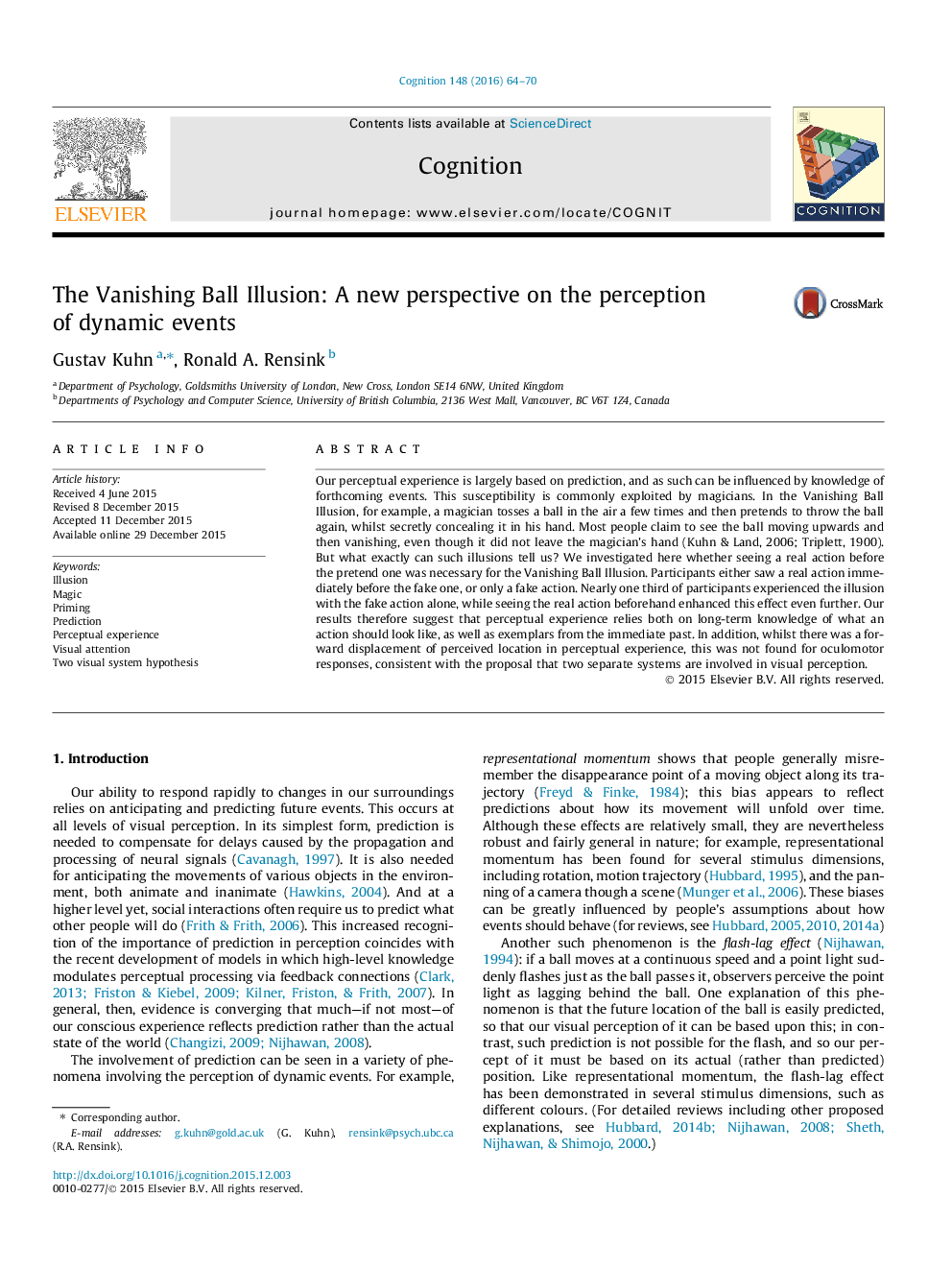| Article ID | Journal | Published Year | Pages | File Type |
|---|---|---|---|---|
| 926328 | Cognition | 2016 | 7 Pages |
•We investigate visual processes that are based on predicting future events.•In the Vanishing Ball Illusion, most people briefly experience a nonexistent action.•Having a real action precede a fake one enhances the likelihood of the illusion.•A dissociation exists between eye movements and conscious visual experience.•Visual experience relies on long-term knowledge of actions, and exemplars from the immediate past.
Our perceptual experience is largely based on prediction, and as such can be influenced by knowledge of forthcoming events. This susceptibility is commonly exploited by magicians. In the Vanishing Ball Illusion, for example, a magician tosses a ball in the air a few times and then pretends to throw the ball again, whilst secretly concealing it in his hand. Most people claim to see the ball moving upwards and then vanishing, even though it did not leave the magician’s hand (Kuhn & Land, 2006; Triplett, 1900). But what exactly can such illusions tell us? We investigated here whether seeing a real action before the pretend one was necessary for the Vanishing Ball Illusion. Participants either saw a real action immediately before the fake one, or only a fake action. Nearly one third of participants experienced the illusion with the fake action alone, while seeing the real action beforehand enhanced this effect even further. Our results therefore suggest that perceptual experience relies both on long-term knowledge of what an action should look like, as well as exemplars from the immediate past. In addition, whilst there was a forward displacement of perceived location in perceptual experience, this was not found for oculomotor responses, consistent with the proposal that two separate systems are involved in visual perception.
